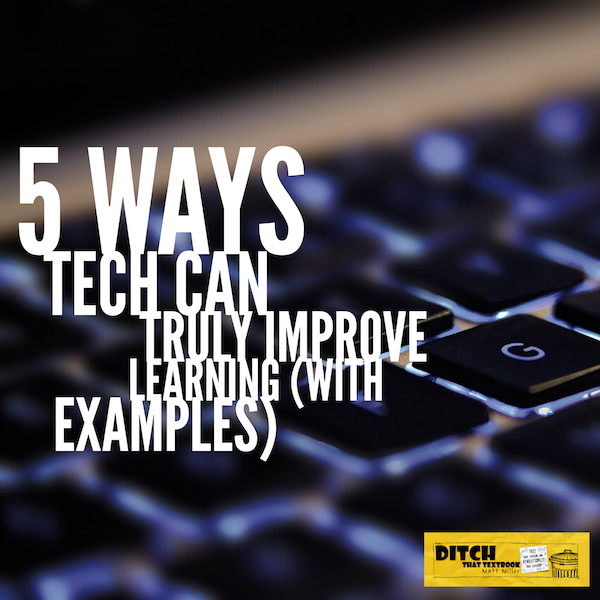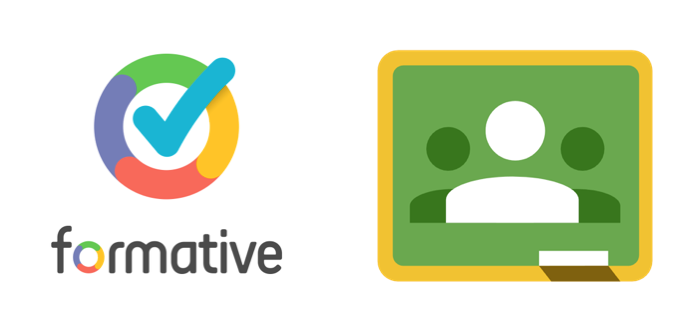

Technology can help us kick teaching and learning up a notch. Here are five concrete examples of what tech can do and how to do it. (Public domain image via Pixabay.com)
Trainers, bloggers and education pundits tend to use lots of catch phrases and buzz words to talk about the power of technology in education.
You’ll hear things like this:
Technology is a game changer.
Technology can do so much for education.
The Internet is full of resources we can use.
Technology is the future of education.
The same people who throw out all of those generalities and prognostications are often the ones that don’t provide concrete examples. It’s easy to talk about the possibilities in theory, drop the microphone and walk away.
That leaves us as educators with our heads spinning, feeling even more overwhelmed than before, thinking, “Where do I even start? How do I take advantage of that?”
Let’s step out of generalities and into practice.
How can technology help us kick teaching and learning up a notch?
Here are five ways I think technology can truly improve learning — with examples to support them:
1. Technology can shorten the feedback loop. Think about your typical, traditional homework assignment. It goes kind of like this:
Where does that homework end up? Often, in the trash, on the floor in the hallway, or worse — sticking out of the bottom of a student’s locker!
In a world where we have instant purchases, instant messaging and instant gratification, we have the potential to create a much more meaningful, responsive feedback loop than that. If we can catch students at the point where they’re still cognitively wrestling with a new concept and provide them with the feedback they need, I’ve found that they’re more likely to use it and internalize it.

Formative (goformative.com) and Google Classroom (classroom.google.com) are great options for providing students with quick feedback.
Here are some ways we can shorten the feedback loop:
2. Technology can make great connections. We have the ability to communicate face-to-face with practically anyone around the world with an Internet connection via video call (Skype, Google Hangout, FaceTime, etc.). Many of us have done a Skype or FaceTime call in our own lives, but so few educators have done video calls in the classroom with students.

Skype and Remind (remind.com) let us make great connections with students and parents.
Here are some ways we can make great connections:
3. Technology can help kids make a difference. Kids are often trying to make meaning with what they’re learning, trying to connect it to their lives. If they feel like their learning is meaningful and makes a difference, they’re going to be more invested. We’re in a position to take what kids learn in our classrooms and use it to benefit others, which makes learning much more worthwhile.
Here are some ways we can help kids make a difference:
4. Technology can take students there. Field trips — especially the big ones that require charter buses or airplanes — can be expensive, time consuming and very detail-heavy. Even the aforementioned virtual field via Skype take some setting up and scheduling. But there are great ways that we give students the experience of being at a place instantly, on demand.

Take your students on the streets almost anywhere in the world with Google Maps Street View. Drag the little yellow man onto the image to explore (see above). (Screenshot taken at maps.google.com)
Here are some ways we can take students there:
5. Technology can help us find ideas. The single most important move I’ve ever made to improve my practice as an educator was to start using Twitter professionally.
I think Twitter’s the best free professional development that exists:
Interested in checking it out? Check out my Twitter for teachers guide at DitchThatTextbook.com/twitter.
[reminder]What are other practical ways that technology can kick teaching and learning up a notch? Do you have some examples or experiences from your own life?[/reminder]For notifications of new Ditch That Textbook content and helpful links:
Interested in having Matt present at your event or school? Contact him by e-mail!
Matt is scheduled to present at the following upcoming events:
[getnoticed-event-table scope=”upcoming” max=”15″ expanding=”false”]
Session expired
Please log in again. The login page will open in a new tab. After logging in you can close it and return to this page.
[…] 5 Way Tech Can Truly Improve Learning– Matt Miller- This post has some good examples of how to put tech into practice in a away that is beneficial for students. […]
[…] 5 ways tech can truly improve learning (with examples) | Ditch That Textbook […]
Nice list!
I had asked for more info on Google Maps/Treks or something on a previous post so it was nice to see it come up again. I noticed in Treks that they have a Minitatur Wunderland which has Austria, Switzerland and several regions of Germany which are really cool. Not sure how I’d work it in to class yet but I’ve saved it for when we work on our Geography.
Danke~
[…] 5 ways tech can truly improve learning (with examples) #edtech @jmattmiller ditchthattextbook.com/2016/10/17/5-w… […]
Hi
First awesome Blog and very helpful!!! Are you ever up in New Jersey?? It would be great to go to one of your PD sessions!!
How do you deal with outdated systems and devices???
Thanks Monica! I’ve been in the New England area a few times but it’s often for school or district PD instead of conferences. Just did the MassCUE Conference in Foxboro, MA … not sure how far that is from you.
Outdated systems and devices … I dealt with this myself in 9-year-old desktop computers I had in my classroom. I just learned the limitations of them and knew how far I could go with them. i.e. Bell ringer activities could take half the period, so that wasn’t helpful, but we could use Edmodo and Google Apps to create if we logged in to the computers as we were entering the room.
Yes, I already do most of that!! a bit frustrating to see and do so many different things outside of school settings!!! I keep positive and move forward even though it might be at a snails pace!!
This is a very good list with good examples. I would have liked to see digital game-based learning included somewhere; though proven by research and recommended at the highest levels of the Department of Education Office of Technology, most teachers are still unfamiliar with it.
Great suggestion, Ivan … thanks for adding it to the list!